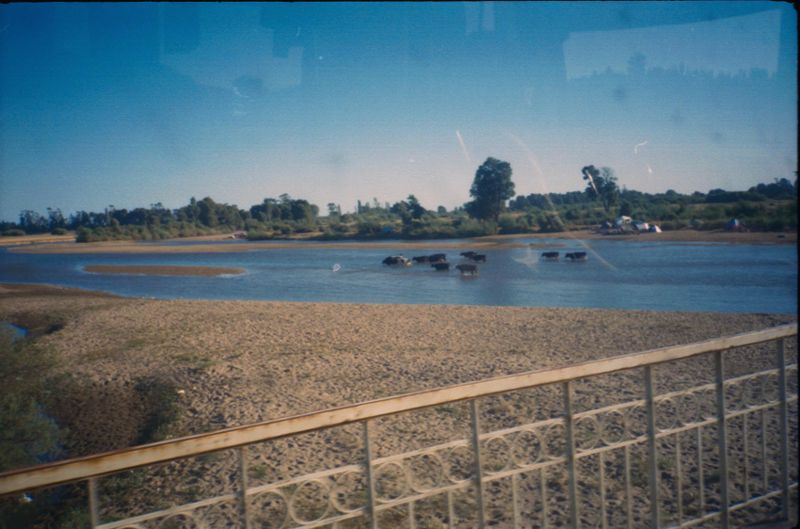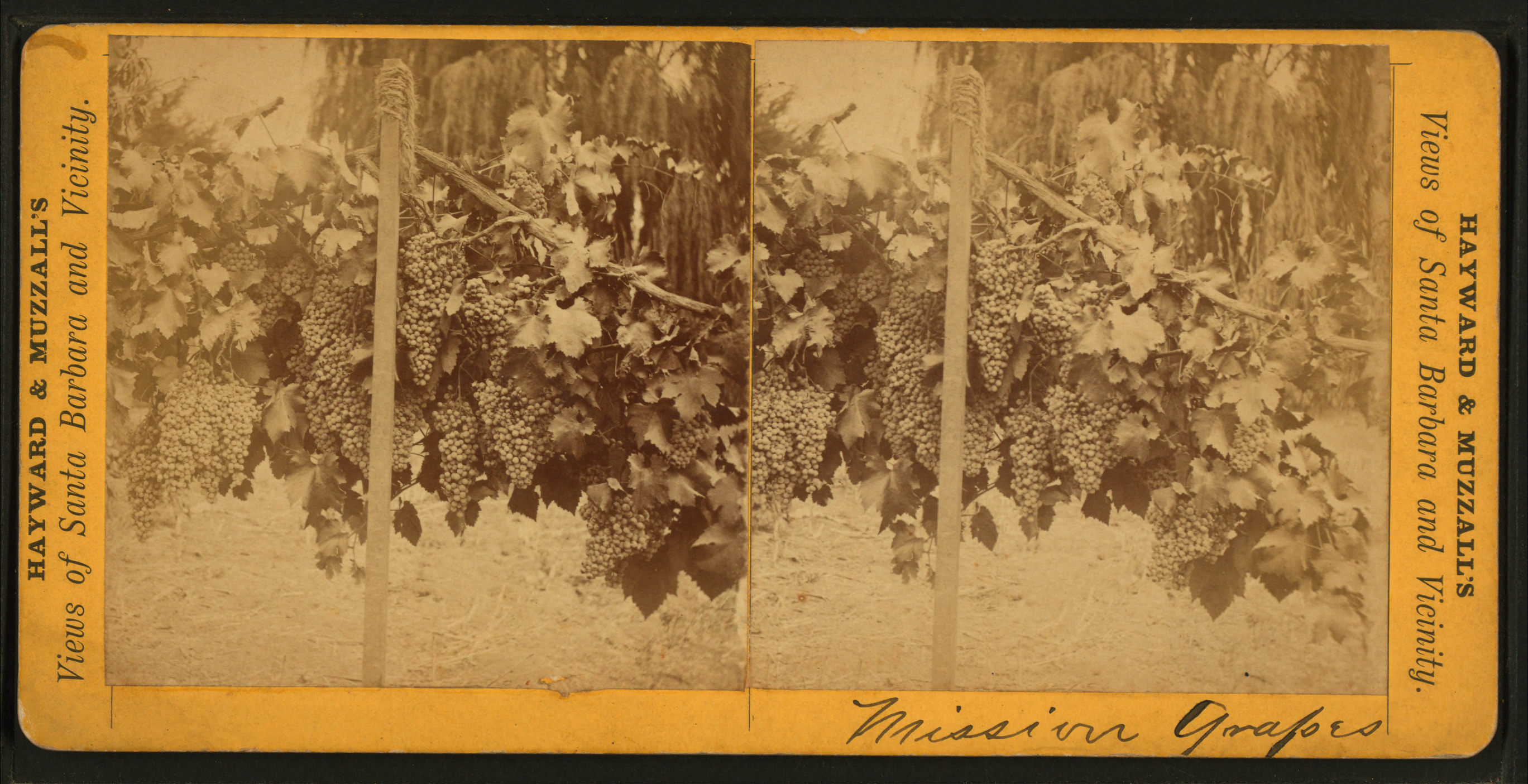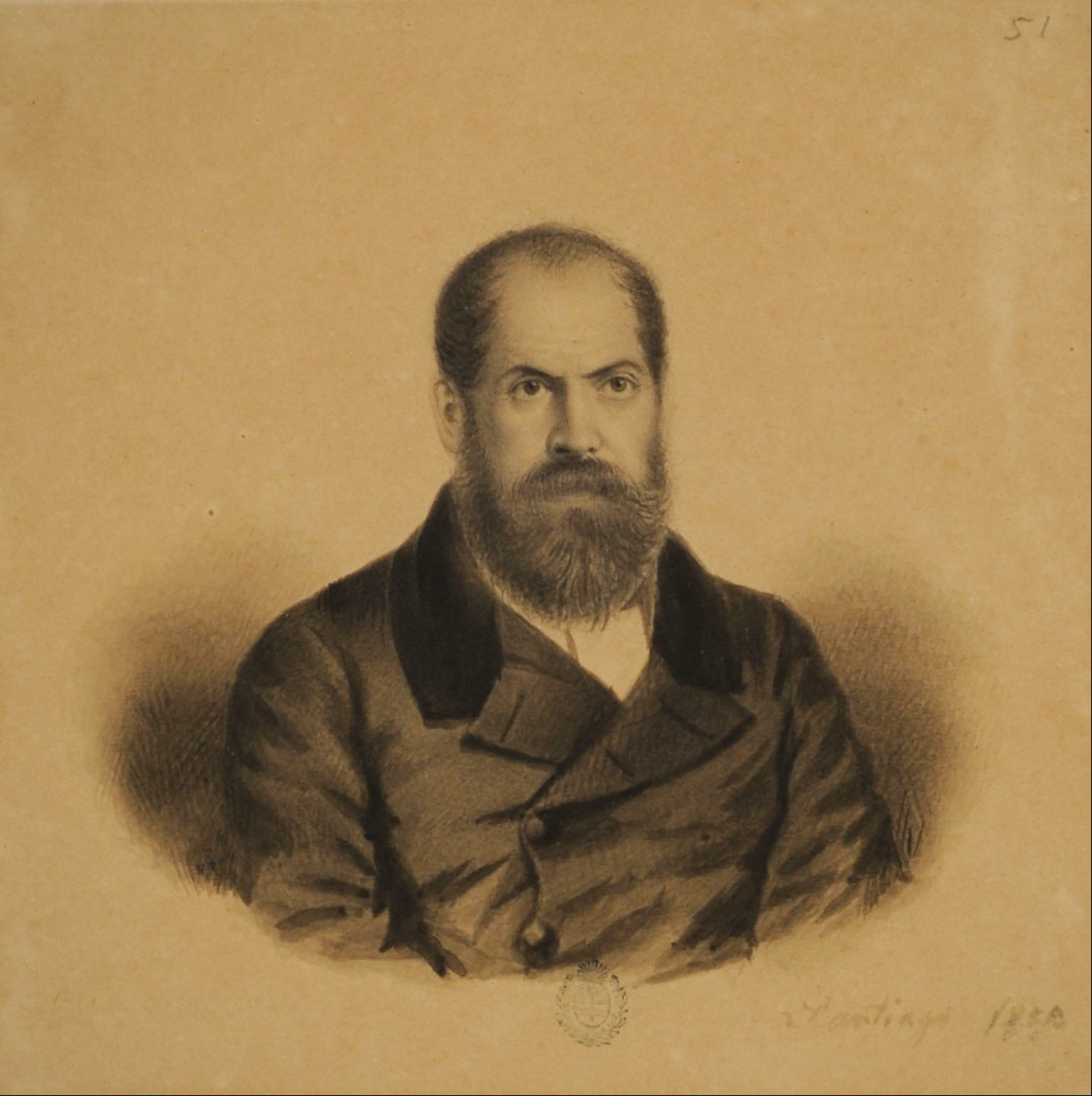|
Pais
: Pais is a red wine grape that has played a prominent role in the Chilean wine industry. Up until the turn of the 21st century, it was Chile's most planted variety until it was overtaken by Cabernet Sauvignon. Today it is most commonly used in the production of jug wine in the Bío-Bío, Maule and Itata River regions in the south. The grape is sometimes known as ''Negra Peruana''. In Argentina the grape is known as ''Criolla Chica''. J. Robinson (ed) ''"The Oxford Companion to Wine"'' Third Edition pg 503 Oxford University Press 2006 History The Pais has one of the longest viticultural history in Chile, believed to have been brought to the region by Spanish conquistadors from Peru during their colonization of the continent in the 16th century. Ampelographers believe that along with the Criolla Grande grape of Argentina and Mission grape of California, that the Pais grape is descended by the Spanish "common black grape" brought to Mexico in 1520 by the Spanish conquistador ... [...More Info...] [...Related Items...] OR: [Wikipedia] [Google] [Baidu] |
Chilean Wine
Chilean wine has a long history for a New World wine region, as it was the 16th century when the Spanish conquistadors brought ''Vitis vinifera'' vines with them as they colonized the region. In the mid-19th century, French wine varieties such as Cabernet Sauvignon, Merlot, Carmenère and Franc were introduced. In the early 1980s, a renaissance began with the introduction of stainless steel fermentation tanks and the use of oak barrels for aging. Wine exports grew very quickly as quality wine production increased. The number of wineries grew from 12 in 1995 to over 70 in 2005. A large number of French people immigrated to Chile during the late 20th century, bringing more viticultural knowledge to the country. Chile is now the fifth largest exporter of wines in the world, and the seventh largest producer. The climate has been described as midway between that of California and France. The most common grapes are Cabernet Sauvignon, Merlot and Carmenère. So far Chile has rema ... [...More Info...] [...Related Items...] OR: [Wikipedia] [Google] [Baidu] |
Criolla Grande
Criolla Grande (also known as Criolla and Criolla Grande Sanjuanina) is a red wine grape commonly found in Argentina. It is different from the Chilean wine grape Pais, also known as ''Criolla Chica'', but ampelographers believe that both grapes share a common parent, and it is now listed as a crossing of Mission (grape), Mission and Muscat of Alexandria. As of 2006, Criolla was the third most widely planted Argentine wine grape (22,500 hectares) after Cereza (30,000 hectares) and the more widely exported Malbec (24,400 hectares). It is primarily found in the Mendoza Province (wine), Mendoza region. The grape has pink skin, which is thicker than in its Chilean cousin, Pais, and is used to produce deeply colored white wine. It is sometimes used to produce a light colored ''rosé''. The grape is rarely exported outside of Argentina where it is used to produce massive quantities of box wine, box and jug wines.J. Robinson (ed) ''"The Oxford Companion to Wine"'' Third Edition pg 210 Oxf ... [...More Info...] [...Related Items...] OR: [Wikipedia] [Google] [Baidu] |
Mission (grape)
Mission grapes are a variety of ''Vitis vinifera'' introduced from Spain to the western coasts of North America, North and South America by Catholic Church, Catholic :Spanish missions in the Americas, New World missionaries for use in making sacramental, table, and fortified wines. It is grown in South America, particularly in Chile and Peru, under then names ''Criolla (grape), Criolla'' and ''Pais''. During the 19th century, the grape was known by several other names, including the Los Angeles grape, and the California grape. History The original European strain, until recently, had been lost, thus the grapes' being named "Mission grapes" since they were generally grown in Spanish missions. Prior to 1522, wine was made from grapes native to the area around Mexico City. However, finding the wine produced lacking, it was decreed by Hernán Cortés that sacramental wine was to be made using grapes grown from cuttings from the Old World, and that the grape was to be planted in every ... [...More Info...] [...Related Items...] OR: [Wikipedia] [Google] [Baidu] |
Peru
, image_flag = Flag of Peru.svg , image_coat = Escudo nacional del Perú.svg , other_symbol = Great Seal of the State , other_symbol_type = Seal (emblem), National seal , national_motto = "Firm and Happy for the Union" , national_anthem = "National Anthem of Peru" , march = "March of Flags" , image_map = PER orthographic.svg , map_caption = , image_map2 = , capital = Lima , coordinates = , largest_city = capital , official_languages = Peruvian Spanish, Spanish , languages_type = Co-official languages , languages = , ethnic_groups = , ethnic_groups_year = 2017 , demonym = Peruvians, Peruvian , government_type = Unitary state, Unitary Semi-presidential system, semi-presidential republic , leader_title1 = President of Peru, President ... [...More Info...] [...Related Items...] OR: [Wikipedia] [Google] [Baidu] |
Argentine Wine
Argentina is the fifth largest producer of wine in the world.H. Johnson & J. Robinson ''The World Atlas of Wine'' pg 300-301 Mitchell Beazley Publishing 2005 Argentine wine, as with some aspects of Argentine cuisine, has its roots in Spain. During the Spanish colonization of the Americas, vine cuttings were brought to Santiago del Estero in 1557, and the cultivation of the grape and wine production stretched first to neighboring regions, and then to other parts of the country. Historically, Argentine winemakers were traditionally more interested in quantity than quality with the country consuming 90% of the wine it produces ( per capita according to 2006 figures). Until the early 1990s, Argentina produced more wine than any other country outside Europe, though the majority of it was considered unexportable. However, the desire to increase exports fueled significant advances in quality. Argentine wines started being exported during the 1990s, and are currently growing in popula ... [...More Info...] [...Related Items...] OR: [Wikipedia] [Google] [Baidu] |
Roman Catholic Church And Colonialism
The Catholic Church during the Age of Discovery inaugurated a major effort to spread Christianity in the New World and to convert the indigenous peoples of the Americas and other indigenous peoples. The evangelical effort was a major part of, and a justification for, the military conquests of European powers such as Portugal, Spain, and France. Christian missions to the indigenous peoples ran hand-in-hand with the colonial efforts of Catholic nations. In the Americas and other colonies in Asia, and Africa, most missions were run by religious orders such as the Franciscans, Dominicans, Augustinians, and Jesuits. In Mexico, the early systematic evangelization by mendicants came to be known as the "Spiritual Conquest of Mexico". Antonio de Montesinos, a Dominican friar on the island of Hispaniola, was the first member of the clergy to publicly denounce all forms of enslavement and oppression of the indigenous peoples of the Americas. Theologians such as Francisco de Vitoria and Bart ... [...More Info...] [...Related Items...] OR: [Wikipedia] [Google] [Baidu] |
California
California is a U.S. state, state in the Western United States, located along the West Coast of the United States, Pacific Coast. With nearly 39.2million residents across a total area of approximately , it is the List of states and territories of the United States by population, most populous U.S. state and the List of U.S. states and territories by area, 3rd largest by area. It is also the most populated Administrative division, subnational entity in North America and the 34th most populous in the world. The Greater Los Angeles area and the San Francisco Bay Area are the nation's second and fifth most populous Statistical area (United States), urban regions respectively, with the former having more than 18.7million residents and the latter having over 9.6million. Sacramento, California, Sacramento is the state's capital, while Los Angeles is the List of largest California cities by population, most populous city in the state and the List of United States cities by population, ... [...More Info...] [...Related Items...] OR: [Wikipedia] [Google] [Baidu] |
Mexico
Mexico (Spanish: México), officially the United Mexican States, is a country in the southern portion of North America. It is bordered to the north by the United States; to the south and west by the Pacific Ocean; to the southeast by Guatemala, Belize, and the Caribbean Sea; and to the east by the Gulf of Mexico. Mexico covers ,Mexico ''''. . making it the world's 13th-largest country by are ... [...More Info...] [...Related Items...] OR: [Wikipedia] [Google] [Baidu] |
Hernán Cortés
Hernán Cortés de Monroy y Pizarro Altamirano, 1st Marquess of the Valley of Oaxaca (; ; 1485 – December 2, 1547) was a Spanish ''conquistador'' who led an expedition that caused the fall of the Aztec Empire and brought large portions of what is now mainland Mexico under the rule of the King of Castile in the early 16th century. Cortés was part of the generation of Spanish explorers and conquistadors who began the first phase of the Spanish colonization of the Americas. Born in Medellín, Spain, to a family of lesser nobility, Cortés chose to pursue adventure and riches in the New World. He went to Hispaniola and later to Cuba, where he received an '' encomienda'' (the right to the labor of certain subjects). For a short time, he served as '' alcalde'' (magistrate) of the second Spanish town founded on the island. In 1519, he was elected captain of the third expedition to the mainland, which he partly funded. His enmity with the Governor of Cuba, Diego Velázquez de Cu ... [...More Info...] [...Related Items...] OR: [Wikipedia] [Google] [Baidu] |
Bio Bio
Bio or BIO may refer to: Computing * bio(4), a pseudo-device driver in RAID controller management interface in OpenBSD and NetBSD * Block I/O, a concept in computer data storage Politics * Julius Maada Bio (born 1964), Sierra Leonean politician, president since April 4, 2018 Media and entertainment * Bio (Australian TV channel) * The Biography Channel (UK and Ireland) * Bio (graffiti artist) Wilfredo Feliciano (born 1966) * ''Bio'' (album), a Chuck Berry album released in 1973 Organizations * Bedford Institute of Oceanography * Biographers International Organization * Biotechnology Innovation Organization * Belgian Investment Company for Developing Countries Energy * Biofuel, fuel made from biomass **Biodiesel, the biofuel alternative for diesel **Biogas, a blend of gasses formed by the breakdown of organic matter used in renewable energy production **Biogasoline, the biofuel alternative for gasoline Places * Bio, Azerbaijan, village in Astara Rayon * Bio, Lot, commune in ... [...More Info...] [...Related Items...] OR: [Wikipedia] [Google] [Baidu] |
Americas
The Americas, which are sometimes collectively called America, are a landmass comprising the totality of North and South America. The Americas make up most of the land in Earth's Western Hemisphere and comprise the New World. Along with their associated islands, the Americas cover 8% of Earth's total surface area and 28.4% of its land area. The topography is dominated by the American Cordillera, a long chain of mountains that runs the length of the west coast. The flatter eastern side of the Americas is dominated by large river basins, such as the Amazon, St. Lawrence River–Great Lakes basin, Mississippi, and La Plata. Since the Americas extend from north to south, the climate and ecology vary widely, from the arctic tundra of Northern Canada, Greenland, and Alaska, to the tropical rain forests in Central America and South America. Humans first settled the Americas from Asia between 42,000 and 17,000 years ago. A second migration of Na-Dene speakers followed later ... [...More Info...] [...Related Items...] OR: [Wikipedia] [Google] [Baidu] |
Varietal
A varietal wine is a wine made primarily from a single named grape variety, and which typically displays the name of that variety on the wine label.The American Heritage Dictionary of the English Language, Fourth Edition, 2000.winepros.com.au. Examples of grape varieties commonly used in varietal wines are Cabernet Sauvignon, Chardonnay and Merlot. Wines that display the name of two or more varieties on their label, such as a Chardonnay-Viognier, are ''blends'' and not varietal wines. The term is frequently misused in place of vine variety; the term ''variety'' refers to the vine or grape, while ''varietal'' refers to the wine produced by a variety. The term was popularized in the US by Maynard Amerine at the University of California, Davis after Prohibition seeking to encourage growers to choose optimal vine varieties, and later promoted by Frank Schoonmaker in the 1950s and 1960s, ultimately becoming widespread during the California wine boom of the 1970s. Varietal wines are ... [...More Info...] [...Related Items...] OR: [Wikipedia] [Google] [Baidu] |





